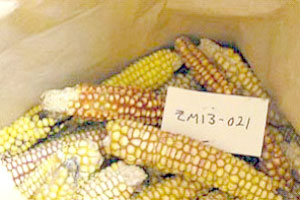It's more than the genes that feed us.
 Some have dubbed it the "doomsday vault"; others, taking a more positive tone, call it a repository of biodiversity. However you look at it, the Global Seed Vault is a fortress. Buried under almost 500 feet of Arctic permafrost, secured against bomb blasts, earthquakes, and potential thieves, this massive seed bank, which will ultimately include samples of a large portion of the world's plant varieties, is our high-tech hope for preserving the genetic diversity that underlies the world's food supply. But despite its scope, the seed vault isn't enough.
Some have dubbed it the "doomsday vault"; others, taking a more positive tone, call it a repository of biodiversity. However you look at it, the Global Seed Vault is a fortress. Buried under almost 500 feet of Arctic permafrost, secured against bomb blasts, earthquakes, and potential thieves, this massive seed bank, which will ultimately include samples of a large portion of the world's plant varieties, is our high-tech hope for preserving the genetic diversity that underlies the world's food supply. But despite its scope, the seed vault isn't enough.
Why a seed bank in the first place? Because industrial farming approaches have made what was once a plethora of diverse crops into something more like a set of monocultures, carefully bred to meet our standards for long distance travel, high yields, and resistance to bug and weed killers. Many scientists fear that climate change will threaten these crops, which provide us with a huge proportion of our food.
To keep growing enough food, we'll have to breed new plant varieties that fare better in higher temperatures, or in depleted soil, or under whatever challenging conditions a particular crop faces. For that, plant breeders will need to tap the genetic diversity that exists among the many varieties of any given plant. A gene that makes one kind of rice grow well in sandy soil, for example, can be transferred to another kind of rice. This is why preserving each and every variety of plant food is essential to securing our food supply.
But a seed bank, vital as it is, falls short. Why? Because how and what we eat is as much about who we are as it is about the seeds we put in the ground. We're missing something if we believe we're saving ourselves simply by saving seeds.
